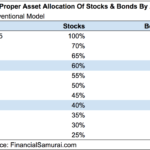The Ultimate Investment Strategy: Unleashing The Power Of Core Plus
Investment Strategy Core Plus: A Comprehensive Guide
Investment strategy core plus is a popular approach in the world of finance that aims to maximize returns while managing risk. It combines the benefits of both core and value-added strategies to create a well-rounded investment portfolio. In this article, we will delve into the details of this strategy, explore its components, and provide insights on its implementation.
What is Investment Strategy Core Plus?
Investment strategy core plus is a blend of two investment styles – core and value-added. The core component of the strategy consists of stable, income-generating assets such as blue-chip stocks, investment-grade bonds, and real estate properties with consistent cash flow. These assets form the foundation of the portfolio, providing stability and reliable returns.
2 Picture Gallery: The Ultimate Investment Strategy: Unleashing The Power Of Core Plus


The plus component, on the other hand, focuses on investments with higher growth potential and higher risk. This can include stocks of emerging companies, high-yield bonds, and real estate properties in up-and-coming areas. The plus component adds an element of growth to the portfolio, enhancing the overall returns.
Who Should Consider Using Investment Strategy Core Plus?

Image Source: brookfield.com
Investment strategy core plus is suitable for investors who are looking for a balanced approach to investing. It appeals to those who prioritize stability and income generation but also seek opportunities for growth. Investors who have a moderate risk tolerance and a long-term investment horizon can benefit from this strategy.
When and Where to Implement Investment Strategy Core Plus?
Investment strategy core plus can be implemented in various investment vehicles, including mutual funds, exchange-traded funds (ETFs), and separately managed accounts. The strategy is applicable in both domestic and international markets, allowing investors to diversify their holdings and capture opportunities across different regions.
The timing of implementing investment strategy core plus depends on individual goals and market conditions. It is generally recommended to take a long-term perspective when utilizing this approach, as it allows for potential growth and income accumulation over time.
Why Choose Investment Strategy Core Plus?

Image Source: squarespace-cdn.com
There are several reasons why investors choose investment strategy core plus:
Diversification:
Investment strategy core plus offers a diversified portfolio by combining different asset classes and investment styles. This diversification helps reduce the overall risk of the portfolio and increases the potential for stable returns.
Potential for Growth:
The plus component of the strategy provides the opportunity for higher returns through investments in assets with growth potential. This allows investors to benefit from new market trends and emerging industries.
Income Generation:
The core component of the strategy focuses on income-generating assets, providing a steady cash flow for investors. This can be particularly beneficial for investors seeking regular income, such as retirees.
Flexibility:
Investment strategy core plus offers flexibility in adapting to changing market conditions. The allocation between core and plus components can be adjusted based on the investor’s risk tolerance, market outlook, and other factors.
How to Implement Investment Strategy Core Plus?
Implementing investment strategy core plus involves several steps:
1. Define Investment Objectives:
Clearly define your investment goals and risk tolerance. This will help determine the appropriate allocation between the core and plus components of your portfolio.
2. Identify Core Assets:
Select stable, income-generating assets for the core component of your portfolio. This can include blue-chip stocks, investment-grade bonds, and real estate properties with consistent cash flow.
3. Identify Plus Assets:
Identify assets with growth potential for the plus component of your portfolio. This can include stocks of emerging companies, high-yield bonds, and real estate properties in up-and-coming areas.
4. Determine Allocation:
Determine the allocation between the core and plus components based on your investment objectives and risk tolerance. This allocation can be adjusted over time to adapt to changing market conditions.
5. Monitor and Rebalance:
Regularly monitor the performance of your portfolio and rebalance as needed to maintain the desired allocation. This ensures that the portfolio remains aligned with your investment goals.
FAQs About Investment Strategy Core Plus
Q: What is the minimum investment requirement for implementing investment strategy core plus?
A: The minimum investment requirement can vary depending on the investment vehicle and the specific assets chosen. It is advisable to consult with a financial advisor or investment provider for more information.
Q: What are the potential risks of investment strategy core plus?
A: Like any investment strategy, investment strategy core plus carries certain risks. The plus component of the strategy involves higher-risk investments, which can lead to higher volatility and potential losses. It is important to carefully assess your risk tolerance and diversify your holdings to mitigate these risks.
Q: Is investment strategy core plus suitable for short-term investors?
A: Investment strategy core plus is generally more suitable for long-term investors who can ride out market fluctuations and benefit from the growth potential of the plus component. Short-term investors may not have enough time to fully capture the benefits of this strategy.
Conclusion
Investment strategy core plus provides a balanced approach to investing, combining stability and income generation with growth potential. By diversifying the portfolio and carefully selecting core and plus assets, investors can maximize returns while managing risk. However, it is essential to carefully assess individual investment objectives and risk tolerance before implementing this strategy. Consultation with a financial advisor can provide further guidance in tailoring investment strategy core plus to individual needs and goals.
Overall, investment strategy core plus offers a comprehensive and well-rounded approach to investment, making it an attractive option for investors seeking a balanced portfolio. With careful planning and monitoring, this strategy can potentially yield fruitful results over the long term.
This post topic: Personal Finance



